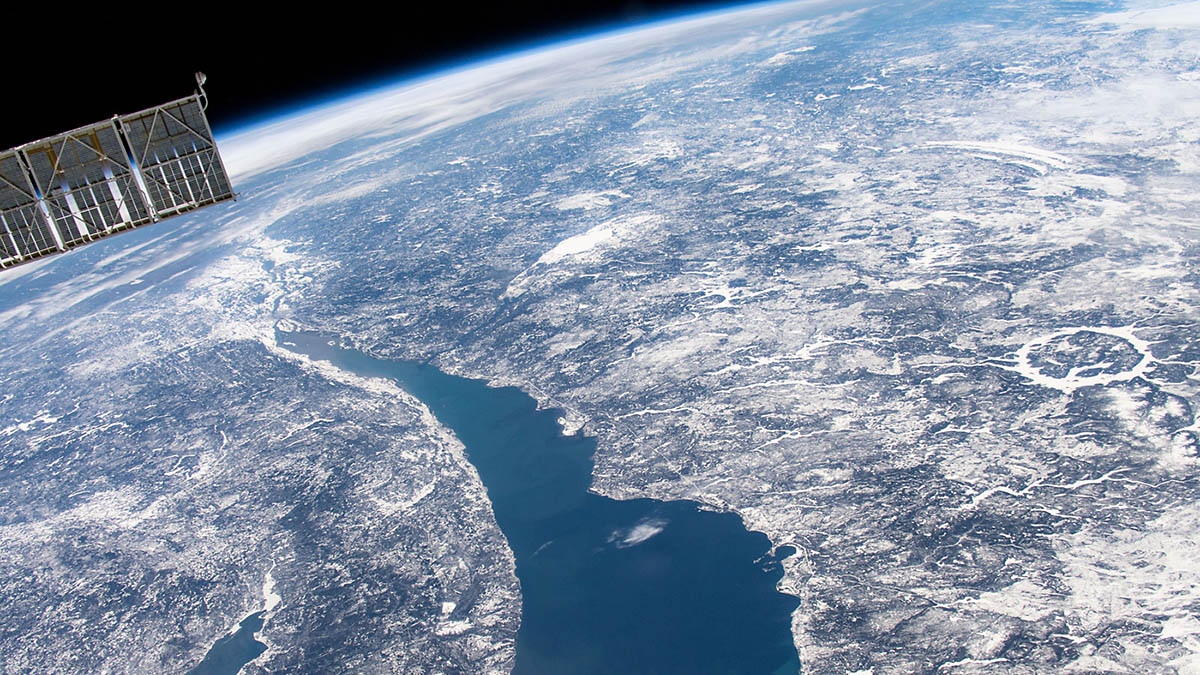NASA Jet Propulsion Laboratory
 Pasadena, CA – While headlines routinely report on “close shaves” and “near-misses” when near-Earth objects (NEOs) such as asteroids or comets pass relatively close to Earth, the real work of preparing for the possibility of a NEO impact with Earth goes on mostly out of the public eye.
Pasadena, CA – While headlines routinely report on “close shaves” and “near-misses” when near-Earth objects (NEOs) such as asteroids or comets pass relatively close to Earth, the real work of preparing for the possibility of a NEO impact with Earth goes on mostly out of the public eye.
For more than 20 years, NASA and its international partners have been scanning the skies for NEOs, which are asteroids and comets that orbit the Sun and come within 30 million miles (50 million kilometers) of Earth’s orbit.

International groups, such as NASA’s Planetary Defense Coordination Office (PDCO), the European Space Agency’s Space Situational Awareness-NEO Segment and the International Asteroid Warning Network (IAWN) have made better communication of the hazards posed by NEOs a top priority.
In the spirit of better communication, next week at the 2019 Planetary Defense Conference, NASA’s PDCO and other U.S. agencies and space science institutions, along with international partners, will participate in a “tabletop exercise” that will play out a realistic – but fictional – scenario for an asteroid on an impact trajectory with Earth.
A tabletop exercise of a simulated emergency commonly used in disaster management planning to help inform involved players of important aspects of a possible disaster and identify issues for accomplishing a successful response. In next week’s exercise, attendees at the conference will play out a fictional NEO impact scenario developed by the NASA Jet Propulsion Laboratory’s Center for NEO Studies (CNEOS).
“These exercises have really helped us in the planetary defense community to understand what our colleagues on the disaster management side need to know,” said Lindley Johnson, NASA’s Planetary Defense Officer. “This exercise will help us develop more effective communications with each other and with our governments.”
This type of exercise is also specifically identified as part of the National Near-Earth Object Preparedness Strategy and Action Plan developed over a two-year period and published by the White House in June 2018.
These exercises are not tightly scripted. The point is to investigate how NEO observers, space agency officials, emergency managers, decision makers and citizens might respond to an actual impact prediction and evolving information.
Next week’s exercise events will occur over the five days of the conference, with exercise leaders briefing participants on the status of the scenario at the end of each day and soliciting response ideas and feedback, based on the latest fictional data.
The scenario begins with the fictional premise that on March 26th, astronomers “discovered” a NEO they consider potentially hazardous to Earth. After a “few months” of tracking, observers predict that this NEO – dubbed 2019 PDC – poses a 1 in 100 chance of impact with Earth in 2027 (in real life, the international community has decided that a 1 in 100 chance of impact is the threshold for action).
Participants in this exercise will discuss potential preparations for asteroid reconnaissance and deflection missions and planning for mitigation of a potential impact’s effects.
What NASA has learned from working with FEMA is that emergency management officials are not focused on the scientific details about the asteroid. “What emergency managers want to know is when, where and how an asteroid would impact, and the type and extent of damage that could occur,” said Leviticus Lewis of the Response Operations Division for FEMA.
But the scientific details are what determine these things, so NASA-funded researchers continue to develop capabilities for determining more exact possible impact locations and effects, based on what could be observed about an asteroid’s position, orbital motion and characteristics, to be ready to produce the most accurate predictions possible in the event an actual impact threat were discovered.
“NASA and FEMA will continue to conduct periodic exercises with a continually widening community of U.S. government agencies and international partners,” said Johnson. “They are a great way for us to learn how to work together and meet each other’s needs and the objectives laid out in the White House National NEO Preparedness Action Plan.”



